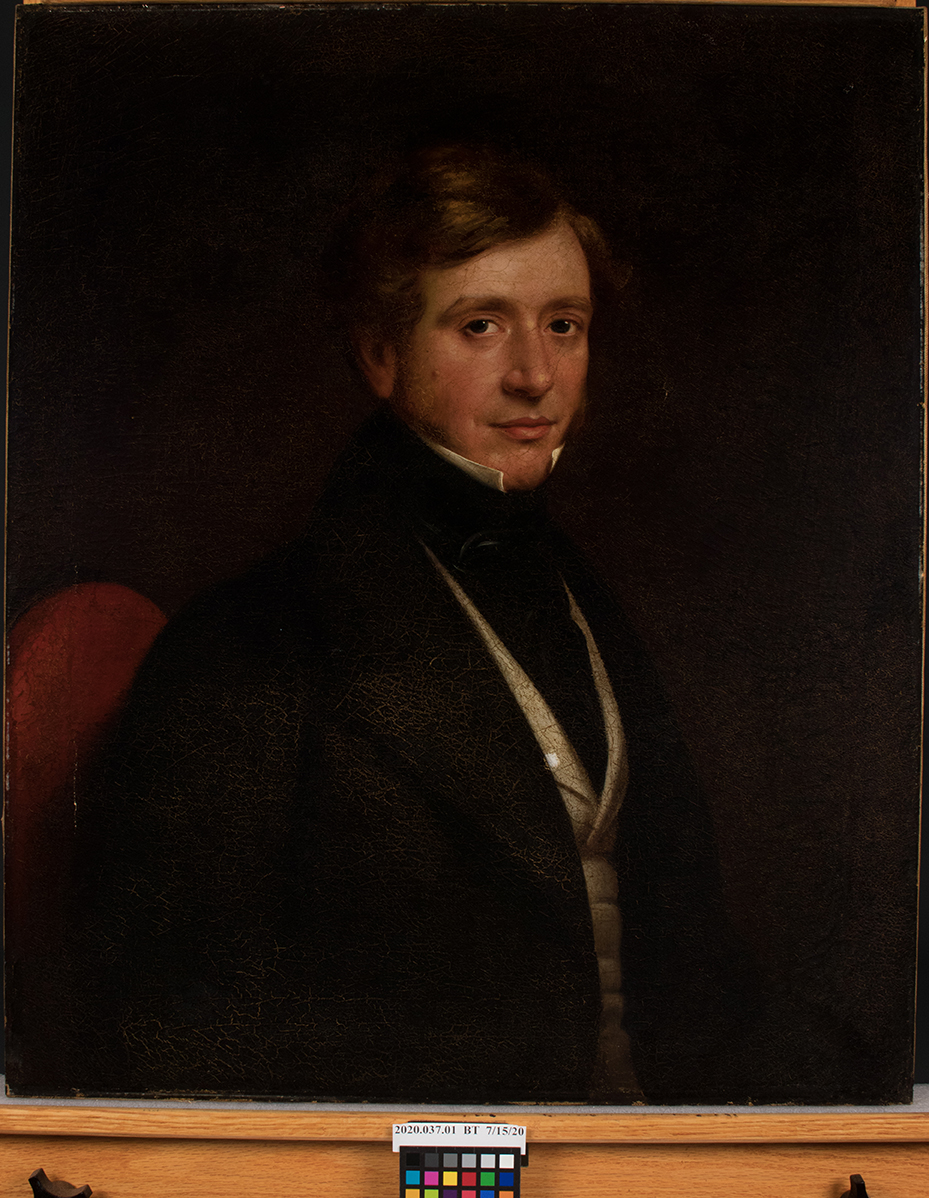We often think that because we value something, it was always seen as valuable and worth keeping. Especially if that cherished object is old, we like to think that it was previously held in high regard. But objects come in and out of fashion.
We often think that because we value something, it was always seen as valuable and worth keeping. Especially if that cherished object is old, we like to think that it was previously held in high regard. But objects come in and out of fashion. One generation’s trash is the next generation’s treasure and vice versa. Such was the case with our client’s family portraits.


The portraits before treatment. The varnish has darkened with age due to oxidation.
She writes: When my grandparents married in about 1918, her mother-in-law offered her the portraits. She said she was much too modern to want them. The portraits then were passed to each brother’s household who was interested. Gram said it took years before she was again offered the paintings and that time she eagerly accepted. When my grandfather passed, Gram closed her home and joined my parents. She was by then well into her 80’s. She offered me the portraits at that time. Must have been about 1976. I love them. Mom said the portraits came from England to Canada on a sailing ship when the original family immigrated. They were in Milton NY with my grandfather’s parents when he grew up.
When the portraits came to the Ford Center, they were in fairly good shape. Despite being passed around, they had been well cared for but were showing their age.

The portraits during treatment. The portrait of the husband on the left has been cleaned and a new varnish applied. Note how much whiter his waistcoat appears, and how the wife’s skin is more yellow by comparison to his.
The portraits are oil paintings on canvas. The dark areas of the black drapery and background were initially painted with a layer of black bitumen. Throughout the painting and especially in the dark areas (the background and the black garment) there are drying cracks that formed while the paint was setting and the topmost layer dried faster than the underlying black bitumen layer. As a result, the upper layer contracted, pulling apart by the drying cracks and allowing the bitumen layer to flow out through the cracks. These cracks are permanent and untreatable. The varnish on the paintings, likely the original, had discolored to a yellowish-brown from oxidation aging. It was recommended that the discolored varnish layer be removed and replaced with new varnish, but it had to be done carefully and with discretion because the dark areas with the bitumen underlayer were very sensitive and easily dissolved by the same solvent that would remove the varnish.
The original varnish was removed to the extent possible without disturbing the paint and underlayers below. A new varnish layer was applied and some small distracting paint cracks and light-colored accretions on the paint surface touched up with pigments.
With the new varnish, the brighter look of the paintings as they originally appeared can once again be shared with the family for future generations.


The portraits after treatment. The new varnish brings out the brightness of the skin tones and the details of the faces and clothing.
Do you have a family heirloom that needs attention? Call our conservators at the Ford Conservation Center at (402) 595-1180 to see if they can help, or email [email protected].



